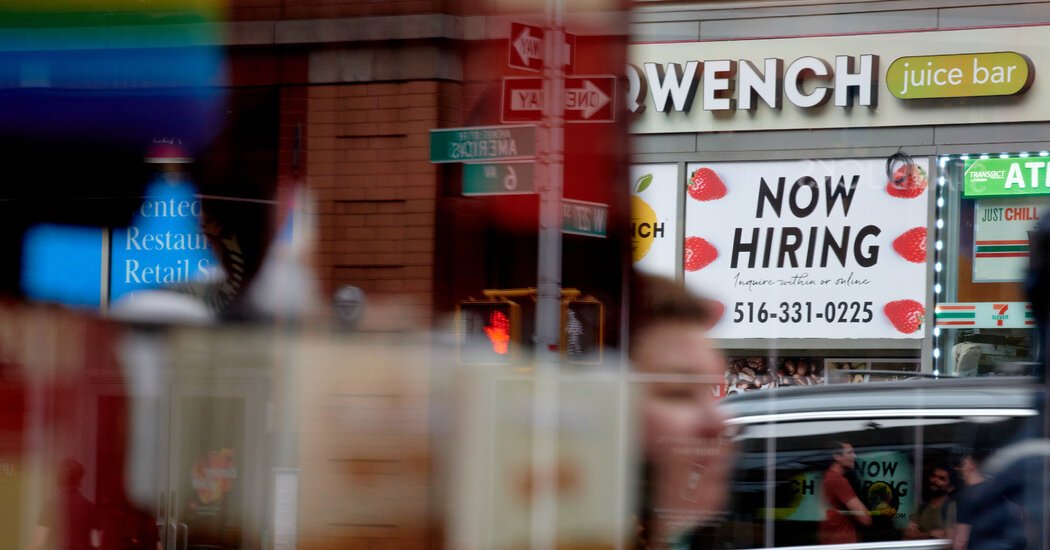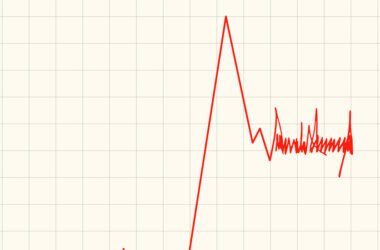The Federal Reserve spent a lot of 2022 and 2023 narrowly specializing in inflation as policymakers set rates of interest: Costs had been rising manner too quick, in order that they turned the central financial institution’s prime precedence. However now that inflation has cooled, officers are extra clearly factoring the job market into their selections once more.
One potential problem? It’s a really tough second to evaluate precisely what month-to-month labor market information are telling us.
Jerome H. Powell, the Fed chair, mentioned throughout a information convention on Wednesday that the best way the job market formed up in coming months may assist to information whether or not and when the central financial institution lowered rates of interest this yr. A considerable weakening may prod policymakers to chop, he advised. If job development stays fast and inflation stays caught, alternatively, the mixture may hold the Fed from decreasing rates of interest anytime quickly.
However it’s robust to guess which of these situations might play out — and it’s trickier than traditional to find out how sizzling at present’s job market is, particularly in actual time. Fed officers will get their newest studying on Friday morning, when the Labor Division releases its April employment report.
Hiring has been fast in latest months. That might usually make economists nervous that the financial system was on the cusp of overheating: Companies would threat competing for a similar employees, pushing up wages in a manner that would ultimately drive up costs.
However this hiring growth is completely different. It has come as a wave of immigrants and employees coming in from the labor market’s sidelines have helped to notably enhance the provision of candidates. That has allowed corporations to rent with out depleting the labor pool.
But the bounce in out there employees has additionally meant {that a} major measure that economists use in assessing the job market’s energy — payroll positive factors — is not offering a transparent sign. That leaves economists turning to different indicators to guage the energy of the job market and to forecast its ahead momentum. And people measures are delivering completely different messages.
Wage development remains to be very strong by some gauges, however it appears to be cooling by others. Job openings have been coming down, the unemployment rate has ticked up lately (notably for Black workers) and hiring expectations in business surveys have wobbled.
The takeaway is that this appears to be a robust job market, however precisely how robust is difficult to know. It’s even more durable to guess how a lot oomph will stay within the months to return. If job positive factors had been to sluggish, would that be an indication that the financial system was starting to buckle, or simply proof that employers had lastly sated their demand for brand new hires? If job positive factors had been to remain robust, would that be an indication that issues had been overheating, or proof that labor provide was nonetheless increasing?
“Via a pre-pandemic lens, the financial system seems to be fairly robust, possibly even sizzling,” mentioned Ernie Tedeschi, a analysis scholar at Yale Legislation College who was, till this spring, a White Home financial adviser. However given the entire positive factors to labor provide, “possibly we shouldn’t use a pre-pandemic lens for interested by the financial system proper now,” he mentioned.
Friday’s report is anticipated to point out that job positive factors remained fast in April: Economists are forecasting a 240,000 individual bounce in payrolls, based on a Bloomberg survey.
That might proceed the pattern over the previous yr. The financial system added 247,000 jobs per 30 days on common from March 2023 to March 2024. To place that in context, the financial system had added 167,000 jobs a month within the yr via March 2019, the spring earlier than the onset of the coronavirus pandemic.
The Fed’s coverage committee voted this week to maintain rates of interest at 5.3 p.c, the place they’ve been set since July. Mr. Powell signaled that they’re prone to keep at that comparatively excessive degree longer than beforehand anticipated, as officers await proof that inflation is poised to chill additional after months of stalled progress.
However whereas the trail forward for worth will increase would be the primary driver of coverage, Mr. Powell mentioned that “as inflation has come down, now to under 3 p.c,” employment additionally “now comes again into focus.”
For now, Fed officers haven’t been overly fearful about fast job positive factors. Mr. Powell famous on Wednesday that the financial system had been capable of develop extra strongly in 2023 partly as a result of the labor provide had expanded a lot, each due to immigration and since extra individuals had been collaborating within the job market.
“Bear in mind what we noticed final yr: very robust development, a extremely tight labor market and a traditionally quick decline in inflation,” Mr. Powell mentioned. “I wouldn’t rule out that one thing like that may proceed.”
Then again, Mr. Powell hinted that Fed officers had been maintaining a tally of wage development. He advised repeatedly that robust wage will increase alone wouldn’t be sufficient to drive the Fed’s selections.
However the Fed chair nonetheless signaled that latest wage positive factors had been stronger than the Fed thought can be according to low and secure inflation over time. As corporations pay extra to draw employees, many economists suppose that they’re prone to increase costs to cowl climbing labor prices and shield revenue margins.
Pay positive factors stay robust by key measures. Information this week confirmed {that a} measure of wages and advantages that the Fed watches carefully, referred to as the Employment Price Index, climbed extra quickly than anticipated in the beginning of 2024.
“We don’t goal wage will increase, however within the longer run, in case you have wage will increase working greater than productiveness would warrant, there will likely be inflationary pressures,” Mr. Powell mentioned this week. Relating to slowing down wage positive factors to a sustainable tempo, “we now have a methods to go on that.”
Whether or not job positive factors and wage positive factors will stay so fast is unclear.
Invoice Kasko, the president of a white-collar employment placement company in Texas, mentioned that whereas he continued to see robust demand for employees, he additionally seen employers turning into pickier because the outlook for rates of interest and the looming presidential election stoked uncertainty. They wished to see extra job candidates, and take longer to make selections.
“There’s nonetheless demand, it’s simply not transferring as shortly,” Mr. Kasko mentioned.
If employers begin to pull again extra concertedly, Mr. Powell made clear this week {that a} “significant” bounce in joblessness may prod the central financial institution to decrease charges.
The upshot? It appears as if officers can be extra alarmed by a marked job market slowdown than by robust continued payroll positive factors, particularly when it’s onerous to inform whether or not sturdy hiring numbers sign that the labor market is sizzling or just that it’s altering.
“There’s an asymmetry in how they view the labor market,” mentioned Michael Feroli, the chief U.S. economist at J.P. Morgan.
Ben Casselman contributed reporting.




